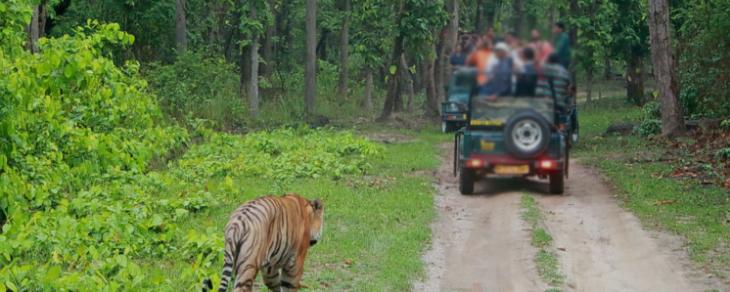
Like many other national parks, the Bandipur national park was the hunting region for kings. The Bandipur Sanctuary was created by the Maharaja of the kingdom of Mysore in the year 1931. It was during that period when only 90 sq km of the area was being used and was named as Venugopala Wildlife Park. In the year 1973 around 800 sq kms of area was introduced to the Venugopala Wildlife Park and was established as Bandipur Tiger Reserve under the tiger project. Later Bandipur National Park joined its hands with its other neighboring parks, the Nagarhole National Park (643 sq km), Madumalai National Park (320 sq km) and Wayanad Wildlife Sanctuary (344 sq km) together to form the essential part of Nilgiri Biosphere Reserve making the area as the largest wildlife protected zone.

Part of the enormous Nilgiris Biosphere Reserve, the Bandipur National Park is a plethora of varied fauna and flora, serving as a large habitat for tigers and the Asian elephant. Rich in its ecological biodiversity, opt to either visit this massive bio-park or drive by NH 181 or NH 766 which pass through this lush nirvana, promising you scores of soothing forests and the chance to see some really cool indigenous animals.
Flora of Bandipur National Park
The forest region of the park is filled with teak, rosewood, sandalwood, Indian kino tree, Indian laurel, clumping bamboo and giant clumping bamboo. Top flowering and fruit trees to spot are axle wood, black cutch, indigo berry, golden shower tree, black myrobalan, flame of the forest, kadam tree, Indian gooseberry and others. Tamarind, mango and other common trees are also found here.
Fauna of Bandipur National Park
The Bandipur national park is famous for spotting elephants and tigers. Apart from these, top mammals to spot here are bonner macaque, dhole, civet, jungle cat, Indian palm, giant flying squirrel, striped hyena, rusty-spotted cat, Nilgiritahr, leopard, Hanuman langur, cat leopard, four horned antelope, Indian hare red and others.
Birdwatching is an important activity here. Top birds found in this park are peafowl, junglefowl, drongos, redheaded vultures, flowerpeckers, Indian rollers, creasted serpent eagles, bee-eaters, hawk eagles, kingfishers, ospreys and others. There are more than 200 species of birds in the park. The breeding season of birds, start right before the monsoon season.
Top reptiles to spot here are Indian rock python, Indian pond terrapin, flying lizard, mugger, monitor lizard, rat snake and others. Common butterflies to spot here are common rose, common jay, lime butterfly, Malabar raven, crimson rose, blue Mormon and others. Numerous species of butterflies are spotted in the park. Numerous beetle varieties are also spotted here. Many new species of butterflies and beetles that are yet to be identified are also found here. Turtles, crocodiles and frogs are also found here.
Best time to Visit:
October to May is the right time to visit the park. During peak winter season, migration birds are quite common. Spotting animals during summer is very easy. Animals come to water sources to quench their thirst during summer with their little ones. In short, skip the monsoon season to visit the park.
Wildlife Safari Timings
1. The bus safari is available between 6:30 am and 9:00 am and between 3:30 pm to 5:30 pm.
2. Elephant safari will be available between 10 am and 11 am.
3. Jeep safari is available from 6:00 am to 9:00am and from 4:00 pm to 6:00 pm.
Note : No safari is allowed after 6:00pm in the evening. The safari timings and duration changes with season, weather conditions, crowd and availability of vehicles.
How to Reach:
The nearest international airport is located in Bangalore, which is 255 km away from the park. A lot of cars and buses are available from Bangalore to reach Bandipur. Coimbatore airport is located just 84 km away from the park. Nearest railway station is located in Mysore which is just 80 km away from the city.